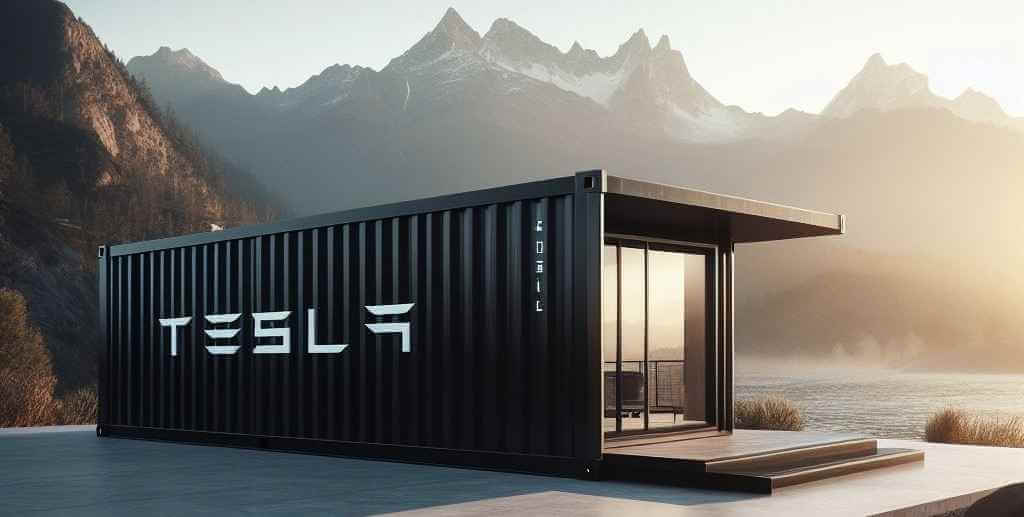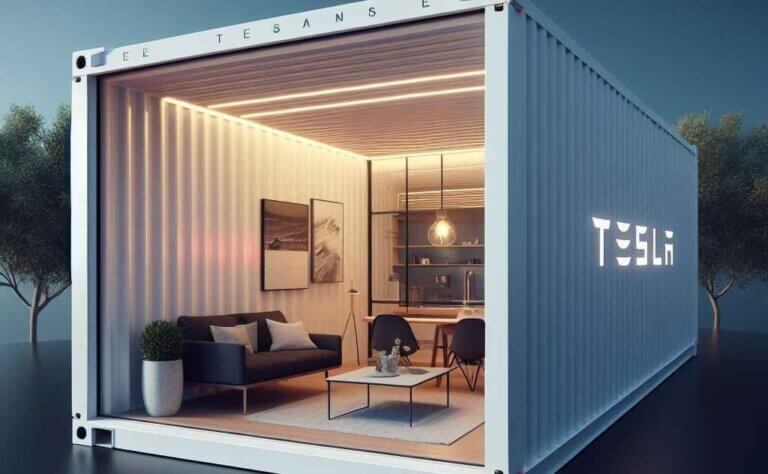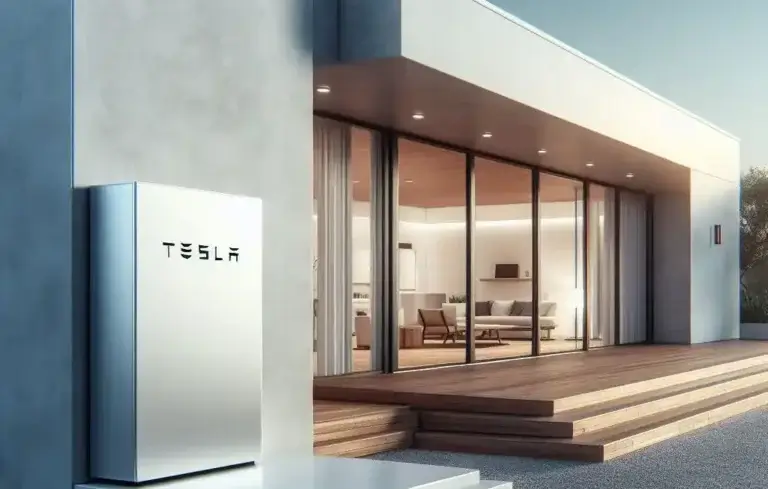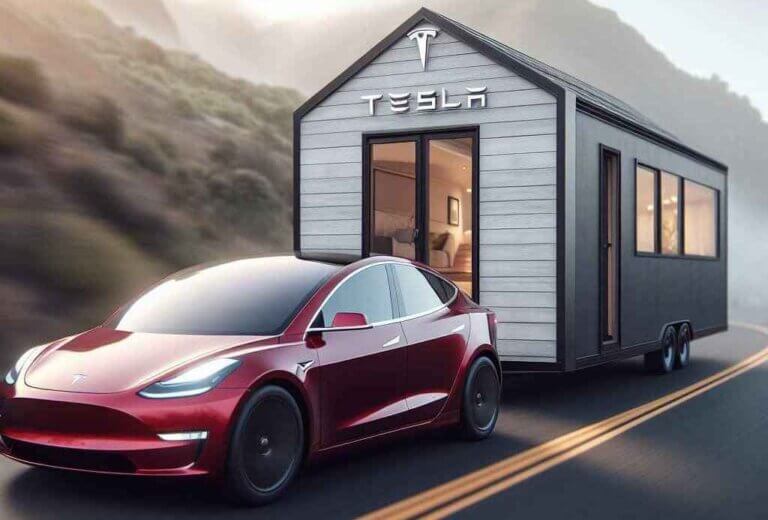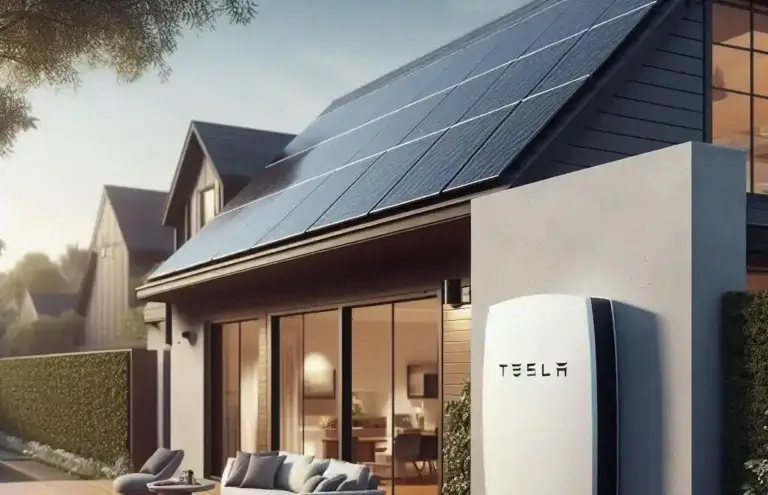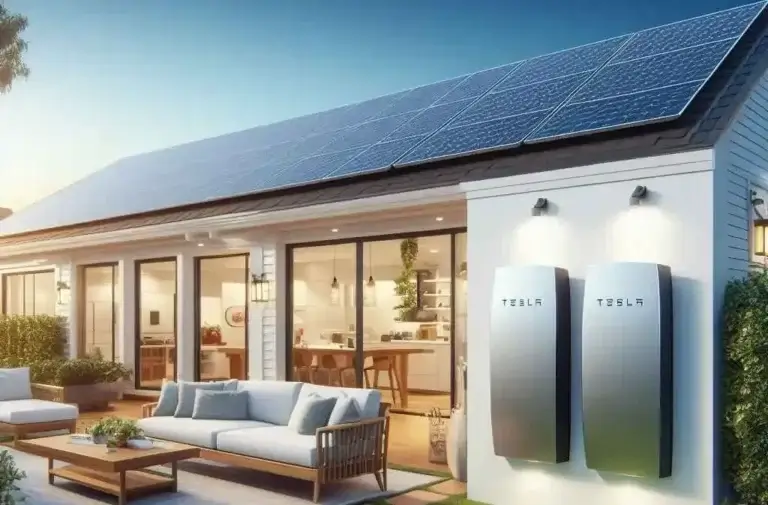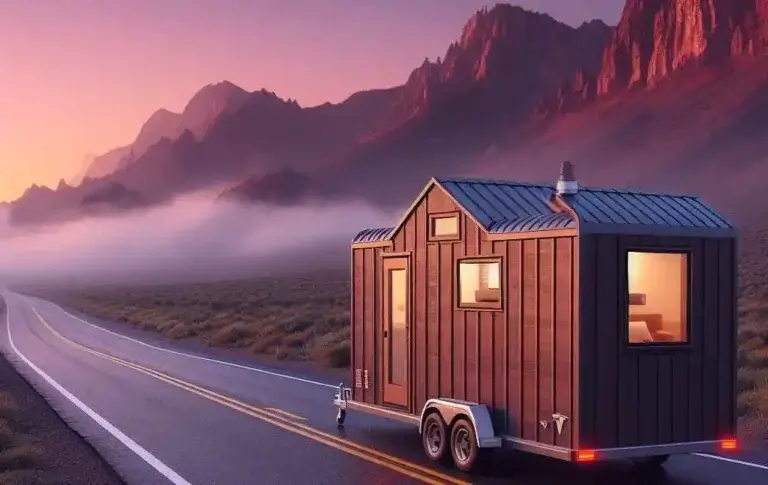Exploring the Tesla Tiny House: Can it Save the Planet?
As the world faces the consequences of climate change, technological innovations have taken the lead in promoting ecological sustainability. One such innovation is the Tesla Tiny House, a self-sustaining home that utilizes renewable energy to function. Its eco-friendly design and use of solar panels and Powerwall have ushered in a new era of ecological innovation in the housing industry.
In this article, we will explore the concept of the Tesla Tiny House and its potential to contribute to environmental sustainability. We will examine the innovative features of this tiny house and discuss its impact on the planet. We will also delve into the broader implications of the Tesla Tiny House for the future of sustainable living.
Key Takeaways:
- The Tesla Tiny House is a self-sustaining home that utilizes renewable energy to function.
- It features an eco-friendly design and uses solar panels and Powerwall.
- The Tesla Tiny House showcases the potential for ecological innovation in the housing industry.
- By reducing carbon footprint, the Tesla Tiny House promotes sustainable practices.
- The Tesla Tiny House is a step towards energy independence and a greener future.
What is a Tesla Tiny House?
The Tesla Tiny House is a sustainable, eco-friendly, and energy-efficient tiny house designed by Tesla, Inc. It is a mobile home built on a trailer to showcase Tesla’s renewable energy products in a practical and aesthetically pleasing manner. The tiny house is part of Tesla’s broader vision of creating a sustainable future by promoting the use of renewable energy and reducing carbon emissions in the housing industry.
The tiny house is a new concept of a “tiny home” that emphasizes eco-friendliness and energy efficiency. Tiny homes have been on the rise in popularity due to their affordability and simplicity, and now Tesla is taking it to the next level by incorporating sustainable living into tiny homes with its Tesla Tiny House.
The Tesla Tiny House features a range of Tesla’s energy products such as solar panels and Powerwall, which work together to generate and store renewable energy. The tiny house also utilizes sustainable materials in its construction such as timber that comes from responsibly managed forests, making it a unique and innovative concept that promotes sustainable living.
The Role of Elon Musk in the Tesla Tiny House Project
Elon Musk, the founder of Tesla, has been a driving force behind the development of the Tesla Tiny House. As a visionary leader in the renewable energy industry, Musk’s involvement in the project has been crucial.
Musk is passionate about promoting sustainable living and reducing reliance on fossil fuels, and the Tesla Tiny House is a prime example of this commitment.
“The ultimate goal is to have clean, sustainable energy consumption that’s completely renewable and zero carbon.”- Elon Musk
The Tesla Tiny House is powered by renewable energy sources, including solar panels and a Powerwall, making it a self-sufficient, eco-friendly living space.
Musk’s vision for the Tesla Tiny House aligns with his broader goal of transitioning to a sustainable energy future. The project highlights the potential for clean energy to power homes and communities.
Collaborating with Tesla
Throughout the development of the Tesla Tiny House, Musk has collaborated closely with his team at Tesla. Together, they have incorporated the latest innovations in solar technology and energy storage to create a truly sustainable living space.
Musk’s hands-on approach to the project has ensured that the Tesla Tiny House incorporates the best possible renewable energy solutions. His involvement has helped to position the Tesla Tiny House at the forefront of sustainable living and eco-friendly housing.
The Future of Renewable Energy
Elon Musk’s commitment to renewable energy and sustainable living has been a driving force behind the Tesla Tiny House project. As the world moves towards a greener future, innovative concepts like the Tesla Tiny House will play a crucial role in promoting clean energy and reducing carbon emissions.
With Musk’s continued involvement in the Tesla Tiny House project, we can anticipate further developments in renewable energy and sustainable living. The project serves as a shining example of what can be achieved when visionary leaders and innovative technology come together.
Solar Panels and Powerwall: The Backbone of the Tesla Tiny House
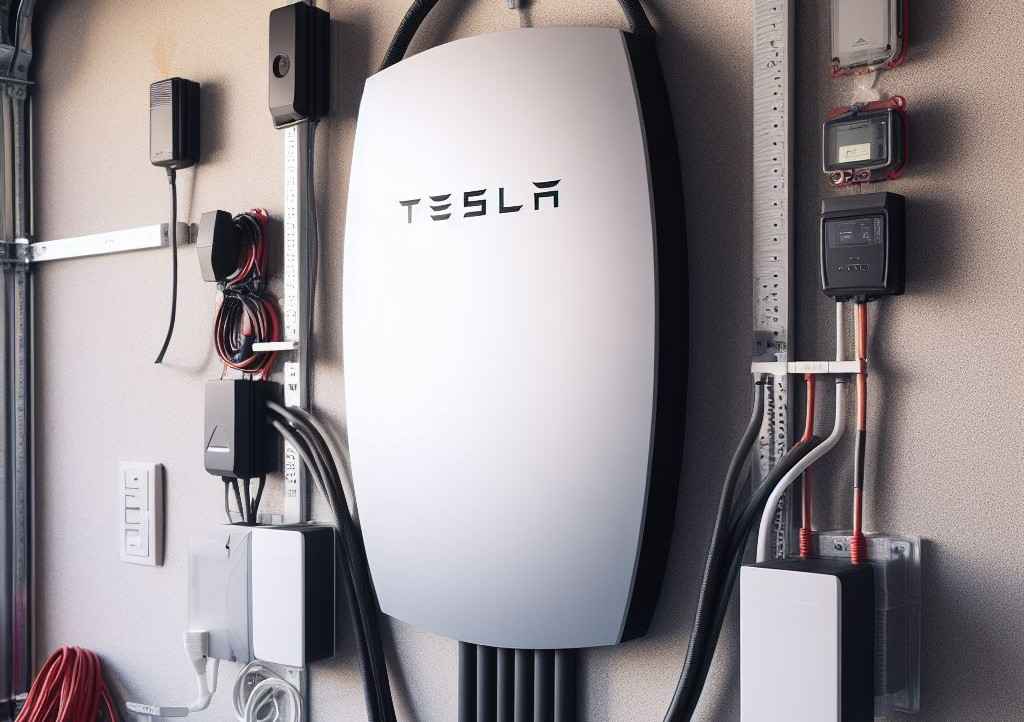
The Tesla Tiny House relies on the power of the sun to generate clean and renewable energy. This eco-friendly concept uses solar panels to harness the energy of the sun and the Powerwall to store it for later use.
The Tesla Tiny House’s solar panels are made of high-quality materials that can withstand harsh weather conditions. They are strategically placed to receive maximum sunlight and generate as much power as possible. These solar panels are responsible for providing the tiny house with renewable energy, thereby reducing its carbon footprint.
The Powerwall is the Tesla Tiny House’s energy storage solution. It stores the energy generated by the solar panels for later use, ensuring that the tiny house has a reliable and consistent energy supply. It is a long-lasting, rechargeable lithium-ion battery that can be used in conjunction with solar panels to provide a complete renewable energy solution. The Powerwall’s sleek and compact design makes it easy to install and maintain.
| Benefits | |
|---|---|
| Solar panels | Generate clean and renewable energy Reduce carbon footprint Provide a reliable energy source Can withstand harsh weather conditions |
| Powerwall | Stores energy for later use Provides consistent energy supply Long-lasting and rechargeable Sleek and compact design |
The combination of solar panels and Powerwall enables the Tesla Tiny House to run entirely on clean and renewable energy. This system eliminates the need for traditional power sources, reducing the tiny house’s reliance on the grid and promoting energy independence. Furthermore, because solar energy is free, the Tesla Tiny House can save homeowners money on their energy bills.
Conclusion
The Tesla Tiny House’s solar panels and Powerwall showcase the potential for clean and renewable energy to power homes of all sizes. As the world continues to move towards a more sustainable future, innovations like the Tesla Tiny House will become increasingly important for reducing our carbon footprint and promoting eco-friendly practices.
The Unique Design of the Tesla Tiny House
The Tesla Tiny House is not only sustainable and eco-friendly; it also boasts a unique architectural design that maximizes energy efficiency. One of the standout features of the house design is its use of sustainable timber for construction, which not only reduces waste but also adds a natural aesthetic appeal to the structure.
Another essential design element is its energy-efficient features, such as high-quality insulation, double-glazed windows, and LED lights, all of which help increase the house’s energy efficiency. These features ensure the house maintains an optimal temperature without relying heavily on heating or cooling appliances.
“The Tesla Tiny House showcases how renewable energy and eco-friendly design can come together to create a unique, beautiful, and practical living space that reflects our sustainable future.”
The Benefits of Sustainable Timber
The use of sustainable timber is a notable design element of the Tesla Tiny House. The timber comes from responsibly managed forests, which reduces environmental impact and ensures a long-term, sustainable source of materials. Moreover, the timber’s natural insulation properties help regulate temperature and improve energy efficiency, making it an ideal material for small houses like the Tesla Tiny House.
Energy-Efficient Features of the Tesla Tiny House
| Feature | Description |
|---|---|
| Insulation | High-quality insulation helps regulate the house’s temperature without relying heavily on heating or cooling appliances, increasing energy efficiency. |
| Double-Glazed Windows | The use of double-glazed windows improves insulation and reduces the need for artificial lighting, contributing to energy efficiency. |
| LED Lights | LED lights consume less energy and last longer than conventional bulbs, contributing to energy efficiency and reducing waste. |
By incorporating energy-efficient elements into its design, the Tesla Tiny House maximizes energy efficiency without compromising on style or functionality.
Mobility and Towability: How a Tesla Model X Powers the Tesla Tiny House
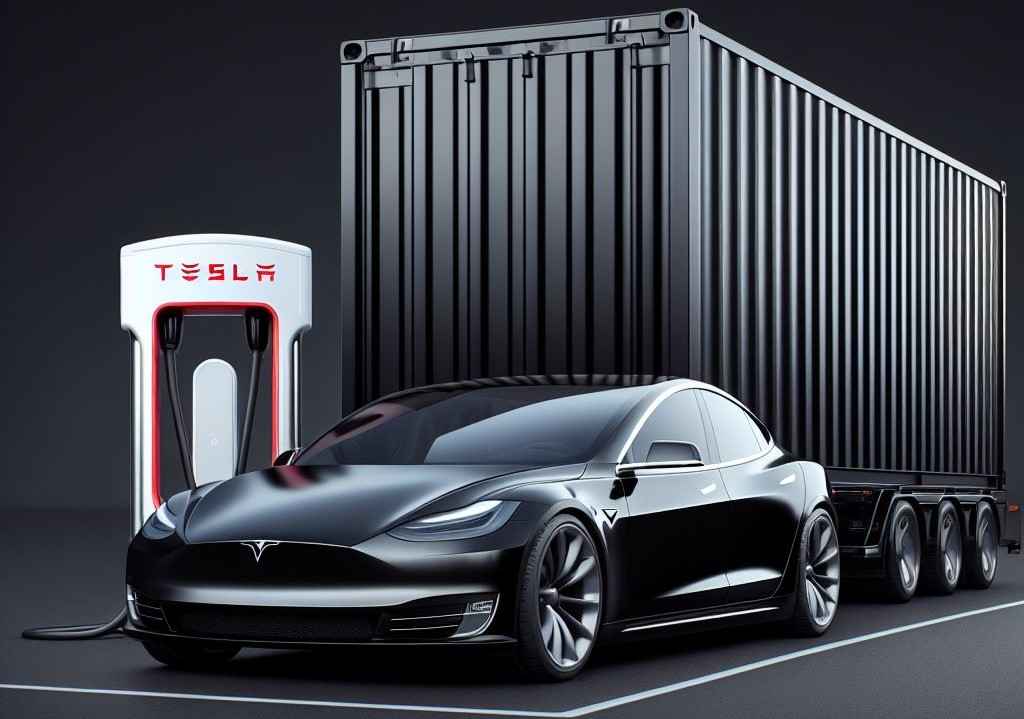
The Tesla Tiny House is designed to be mobile and towable, making it an ideal solution for those who prioritize sustainability and mobility. It is commonly towed by a Tesla Model X, a vehicle well-known for its renewable energy features.
By utilizing the power generated from solar panels installed on the tiny house’s roof, the Tesla Model X can tow the Tesla Tiny House for up to 400 kilometers on a single charge. This sustainable system ensures that the tiny house can be easily transported to any location, without relying on fossil fuels or grid-based electricity.
In addition to being an efficient and eco-friendly mode of transport, the Tesla Model X also serves as a source of backup power for the tiny house. The car’s battery, known as the Powerwall, can store energy generated from solar panels to be used by the house when needed. This means that even when the sun isn’t shining, the tiny house can still rely on renewable energy to power its systems.
“The Tesla Model X and the Tesla Tiny House are a perfect match,” says Elon Musk, who has long championed sustainable living and renewable energy. “By combining the power of the sun and electric vehicles, we can significantly reduce our carbon footprint while still enjoying the freedom and mobility that we desire.”
Together, the Tesla Model X and the Tesla Tiny House represent a new era of sustainable living, where mobility and environmental responsibility go hand-in-hand. As more people begin to prioritize eco-friendly solutions for their homes and transportation, we can expect to see more vehicles and homes like these on the roads and in our communities.
The Features a Tesla Tiny House Can Power
The Tesla Tiny House is an innovative concept that showcases the potential of renewable energy in powering an entire home. It utilizes solar panels and Powerwall, a rechargeable lithium-ion battery, to generate and store clean energy. Here are some of the features that the Tesla Tiny House can power:
| Feature | Power Required |
|---|---|
| Refrigerator | 15-20 kWh per month |
| LED Lights | 2-5 kWh per month |
| Electric Stove | 30-60 kW per hour |
| Electric Oven | 2.3-3.3 kWh per hour |
| Electric Water Heater | 4-5 kW per hour |
| Air Conditioning | 1.5-5 kW per hour |
| Electric Vehicle | 30-80 kWh per charge |
As you can see, the Tesla Tiny House can power a variety of household appliances and amenities, including electric stoves and ovens, refrigerators, LED lights, and even air conditioning. With its use of renewable energy from solar panels and Powerwall, it can operate without relying on traditional energy sources, reducing carbon footprint and promoting sustainable living.
Moreover, the integration of Powerwall and solar panels enables this tiny house to function independently from the grid, providing a unique level of energy independence. This setup ensures that the house can continue to run even during power outages, delivering reliable energy to its occupants.
Expanding the Reach: Tesla Tiny House Beyond Australia
The Tesla Tiny House has already made a significant impact on the housing industry in Australia. Its innovative design and use of renewable energy make it a compelling option for eco-conscious homeowners. However, the ambition of the project does not stop there. Elon Musk and the Tesla team have plans for global expansion, taking the Tesla Tiny House to new heights.
The potential for the Tesla Tiny House to make its mark on a global scale is immense. By harnessing the power of renewable energy, this tiny house has the potential to revolutionize the way we approach sustainable living. With its use of solar panels and Powerwall energy storage, the Tesla Tiny House can provide clean and sustainable energy to homes and communities around the world.
Where Could the Tesla Tiny House go?
The expansion of the Tesla Tiny House is not limited by geographical boundaries. Wherever there is a need for sustainable and eco-friendly housing, the Tesla Tiny House can play a role. From remote communities to urban areas, there are countless possibilities for this innovative project.
Some potential regions for the expansion of the Tesla Tiny House include:
| Region | Potential Benefits |
|---|---|
| North America | Large market for eco-friendly housing and renewable energy |
| Europe | Strong emphasis on sustainability and green living |
| Asia-Pacific | Growing demand for renewable energy solutions |
| Africa | Potential to bring sustainable housing to remote and underdeveloped areas |
With the right support and investment, the Tesla Tiny House could help contribute to a greener future across the globe. Its innovative design and use of renewable energy make it a compelling option for homeowners and communities everywhere.
As the Tesla team explores the possibilities for global expansion, it is clear that the Tesla Tiny House has the potential to change the face of sustainable living. By harnessing the power of renewable energy, this tiny house can play a key role in reducing carbon footprints and promoting eco-friendly practices worldwide. The future of the Tesla Tiny House looks bright, and with global expansion on the horizon, the possibilities are endless.
The Future of Sustainable Living: Tesla Tiny House and Beyond
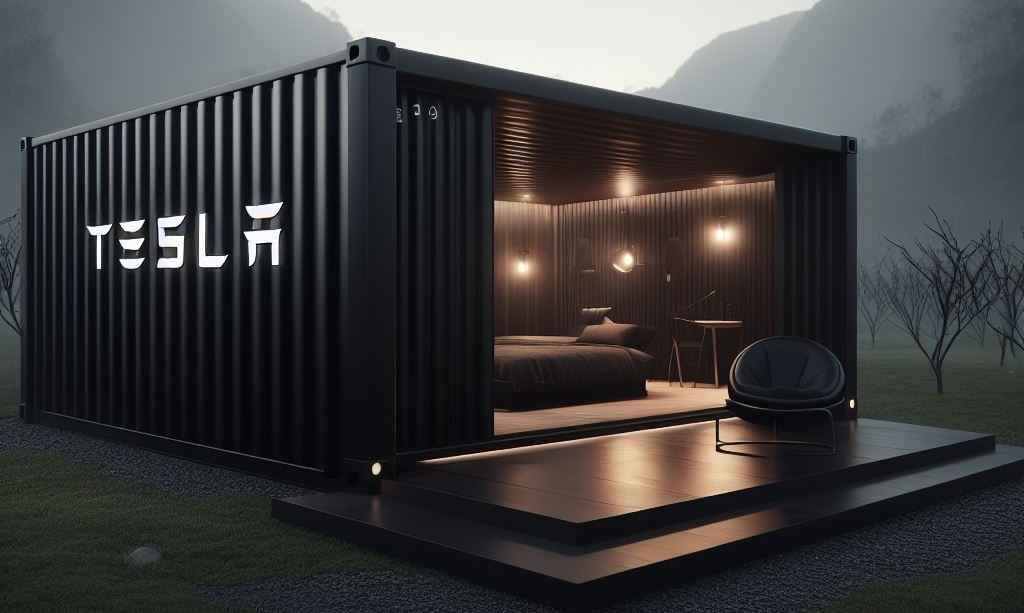
The Tesla Tiny House serves as a prime example of the potential for sustainable living. By utilizing renewable energy and eco-friendly design, it paves the way for a greener future. However, the impact of this innovation extends beyond this single project.
Sustainable Living
As more people become aware of environmental concerns, the demand for sustainable living options continues to rise. The Tesla Tiny House represents a shift towards a more eco-friendly approach to housing, one that can help reduce carbon footprint and promote a more sustainable way of life.
Renewable Energy
The use of renewable energy, such as solar panels and Powerwall, highlights the importance of transitioning away from non-renewable energy sources. The Tesla Tiny House demonstrates that it is possible to live a modern and comfortable life while still utilizing renewable energy sources.
Solar Panels and Powerwall
The integration of solar panels and Powerwall allows for energy independence and the reduction of reliance on the grid. By harnessing the power of the sun, the Tesla Tiny House generates clean energy and showcases the potential for a greener future.
The Impact of Tesla Tiny House
The Tesla Tiny House has the potential to inspire further innovation and advancements in sustainable living. It represents a new way of approaching housing that takes into account the environmental impact of our choices. As more people adopt this mindset, we can move towards a more sustainable future.
- Sustainable living is becoming increasingly popular
- Renewable energy plays a crucial role
- The Tesla Tiny House demonstrates the potential for clean and energy-efficient housing
- This innovation can inspire further advancements in sustainable living
Building a Sustainable Future: How Tesla Tiny House Reduces Carbon Footprint
As the world shifts towards a more sustainable future, the Tesla Tiny House plays a crucial role in reducing carbon footprint. By utilizing renewable energy sources, such as solar panels and Powerwall, this tiny house minimizes its impact on the environment.
Solar panels have become a popular choice for many homeowners seeking to reduce their carbon footprint. These panels harness the power of the sun, converting it into clean energy that can power a home. The Tesla Tiny House takes this a step further by incorporating a solar installation into its design, allowing it to generate clean energy for its inhabitants.
Combined with the Powerwall, a rechargeable lithium-ion battery, the Tesla Tiny House can store excess solar energy to use later. This means that even on cloudy or rainy days, the tiny house can still rely on renewable energy sources and operate with minimal impact on the environment.
The Impact on Carbon Footprint
By using renewable energy sources, the Tesla Tiny House significantly reduces its carbon footprint. Traditional homes, depending on their size and energy usage, can produce up to 28 metric tons of CO2 emissions a year. In contrast, the Tesla Tiny House produces only a fraction of that amount.
Additionally, the sustainable design of the Tesla Tiny House minimizes its environmental impact. The use of sustainable timber and energy-efficient elements, such as insulation and ventilation, results in a house that consumes less energy and produces fewer emissions.
Overall, the Tesla Tiny House provides a sustainable living option that not only reduces carbon footprint but also promotes eco-friendly practices. Its use of renewable energy sources and innovative design serves as a model for future advancements in the housing industry.
The Integration of Powerwall and Solar: A Step Towards Energy Independence
The Tesla Tiny House represents a major milestone in renewable energy and sustainable living. At the heart of this innovation are two key elements: Powerwall and solar panels. The Tesla-designed Powerwall battery pack stores energy generated by solar panels during the day, allowing households to use this stored energy during peak times when electricity demand is highest. This not only reduces reliance on the traditional power grid but also ensures a constant and reliable source of energy.
The Tesla Tiny House features a state-of-the-art solar panel installation that maximizes energy collection and use. The panels are strategically placed to capture as much sunlight as possible, generating clean energy that can power the entire house. By integrating Powerwall and solar panels, the Tesla Tiny House enables energy independence and reduces reliance on traditional power providers.
The Benefits of Energy Storage
Energy storage is a critical component of the Tesla Tiny House’s design. By capturing and storing energy generated by solar panels, this tiny house can power itself without relying on the grid. This not only reduces dependence on fossil fuels but also helps to reduce costs associated with traditional energy sources. Moreover, by promoting the use of clean and renewable energy, the Tesla Tiny House contributes to a greener and more sustainable future.
The Future of Energy Storage
The integration of Powerwall and solar panels within the Tesla Tiny House represents a significant step towards energy independence. As more households and communities adopt this technology, traditional energy providers may find it difficult to remain competitive. With energy storage becoming more affordable and accessible, the Tesla Tiny House may soon become the norm rather than the exception. This not only benefits the environment but also contributes to a more resilient and self-sufficient society.
Harnessing the Power of the Sun: How Tesla Tiny House Generates Clean Energy
The Tesla Tiny House is a prime example of sustainable and eco-friendly housing, emphasizing the use of renewable energy sources such as solar panels to generate clean energy. Here, we delve into the mechanism of how solar panels work within the Tesla Tiny House and how they harness the power of the sun to provide clean energy.
Solar panels are made up of photovoltaic (PV) cells, which capture sunlight and convert it into usable electricity through a process known as the photovoltaic effect. These PV cells are arranged in a grid-like pattern on the surface of the panels, allowing them to absorb sunlight from multiple angles.
The Tesla Tiny House is equipped with a solar installation consisting of 6 panels, each with a capacity of 3.8 kW. These panels are connected to a Powerwall, which acts as a storage system for any excess energy generated by the solar panels. The Powerwall has a capacity of 14 kWh, allowing it to power the house when the sun is not shining.
What makes the use of solar panels in the Tesla Tiny House so revolutionary is its emphasis on clean energy. By relying on solar power instead of fossil fuels, this tiny house significantly reduces its carbon footprint and promotes sustainable living.
“The use of solar panels in the Tesla Tiny House is a major step forward in reducing our reliance on non-renewable energy sources and promoting clean, sustainable living.”
The combination of solar panels and Powerwall within the Tesla Tiny House enables energy independence and reduces reliance on the grid, allowing individuals to take charge of their energy usage and contribute to a greener future.
Conclusion
The Tesla Tiny House is a groundbreaking concept that showcases the potential for sustainable living. By utilizing renewable energy and eco-friendly design, this tiny house represents a significant step towards a greener future.
The integration of solar panels and Powerwall enables energy independence and reduces reliance on the grid, while the use of sustainable timber and energy-efficient elements helps to minimize carbon footprint.
The Tesla Tiny House has demonstrated its capabilities in real-life examples and case studies, providing clean and renewable energy to homes and communities. Furthermore, plans for global expansion indicate that this innovation is set to make an even greater impact on a global scale.
Looking ahead, the Tesla Tiny House represents just one aspect of the future of sustainable living. As renewable energy and eco-friendly housing continue to advance, we can expect to see even more innovative concepts emerge.
Overall, the Tesla Tiny House serves as a beacon of hope for those seeking to reduce their carbon footprint and contribute to a greener future. By harnessing the power of renewable energy and promoting sustainable practices, this innovation represents a significant step towards a more environmentally friendly world.
FAQ
What is the Tesla Tiny House?
The Tesla Tiny House is a sustainable tiny house that utilizes renewable energy products, such as solar panels and Powerwall, to function.
What is the role of Elon Musk in the Tesla Tiny House project?
Elon Musk is involved in the development of the Tesla Tiny House and has a vision for sustainable living, which aligns with the project’s use of renewable energy and innovative technologies.
How does the Tesla Tiny House generate power?
The Tesla Tiny House generates power through solar panels, which harness clean and renewable energy from the sun, and store it in Powerwall for future use.
What are the unique design features of the Tesla Tiny House?
The Tesla Tiny House incorporates sustainable timber and energy-efficient elements into its design, making it eco-friendly and efficient.
How is the Tesla Tiny House powered during transportation?
The Tesla Tiny House is towed by a Tesla Model X, which powers it using renewable energy generated from solar panels installed on the tiny house.
What can a Tesla Tiny House power?
A Tesla Tiny House can power an entire home using renewable energy from its solar panels and Powerwall, providing clean and sustainable energy for various appliances and systems.
Are there real-life examples of the Tesla Tiny House in action?
Yes, there are real-life examples and case studies showcasing how the Tesla Tiny House has successfully provided clean and renewable energy to homes and communities.
Is there a plan to expand the reach of the Tesla Tiny House?
Yes, there are plans to expand the reach of the Tesla Tiny House beyond Australia and into other countries, potentially making a global impact on sustainable living.
What is the future potential of the Tesla Tiny House?
The Tesla Tiny House has the potential to inspire further advancements in renewable energy and eco-friendly housing, contributing to a more sustainable future.
How does the Tesla Tiny House reduce its carbon footprint?
The Tesla Tiny House promotes sustainable practices and reduces carbon footprint by utilizing renewable energy from solar panels and Powerwall, minimizing reliance on non-renewable sources.
How does the integration of Powerwall and solar panels benefit the Tesla Tiny House?
The integration of Powerwall and solar panels within the Tesla Tiny House enables energy independence and reduces reliance on the grid, ensuring a continuous supply of clean and renewable energy.
How does the Tesla Tiny House generate clean energy?
The Tesla Tiny House generates clean energy by harnessing the power of the sun through solar panels, providing a renewable and sustainable source of energy.
What is the significance of the Tesla Tiny House in promoting sustainable living?
The Tesla Tiny House showcases the potential for sustainable living through its use of renewable energy and eco-friendly design, contributing to a greener and more environmentally conscious future.

